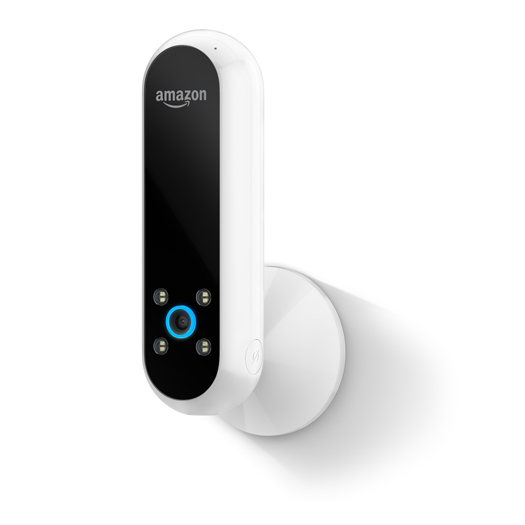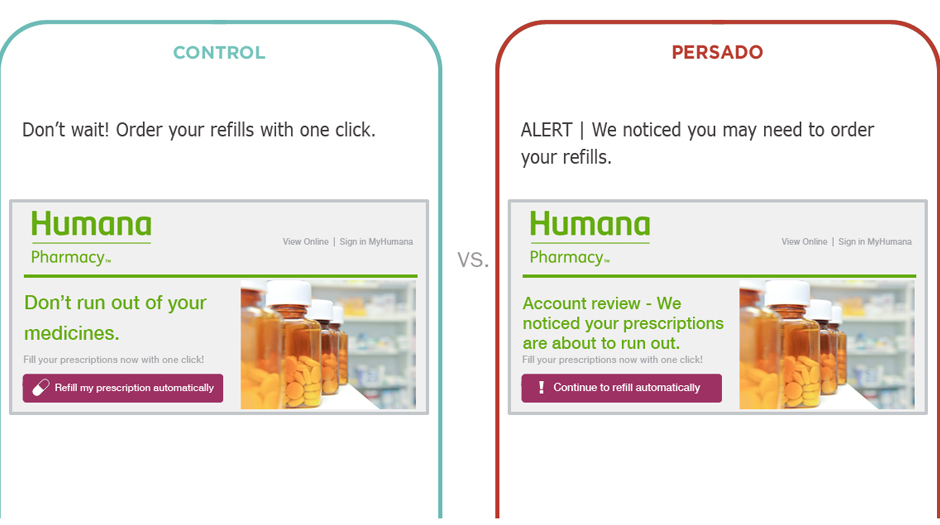Consumer Electronics & Media
The Rise of AI
Published
6 years agoon
By
BXP Staff
AI has impacted everything from banking to transportation to advertising, with the International Data Corporation (IDC) predicting that global spending on cognitive systems will reach $31.3 billion by 2019. Savvy brands are utilizing AI more than ever before, relying on the analytics it provides, as well as consumer data to better build marketing campaigns and improve the customer experience.
 Greg Dale, COO of Persado, an AI platform made up of the world’s largest database of marketing language, works with brands such as Microsoft, Verizon, American Express, Neiman Marcus, and The Gap to improve the way they communicate with customers, increasing customer engagement and conversions. He believes AI is poised to have a massive impact on brand building and marketing by enabling personalized language and emotions for individual customers. “Today’s consumers, especially younger audiences, are no longer satisfied with merely being approached as marketing targets—instead, they seek to build personal and emotional relationships with the brands they do business with,” Dale says. “These types of brand-consumer relationships not only drive purchasing decisions but have the potential to create long-term, loyal customers.”
Greg Dale, COO of Persado, an AI platform made up of the world’s largest database of marketing language, works with brands such as Microsoft, Verizon, American Express, Neiman Marcus, and The Gap to improve the way they communicate with customers, increasing customer engagement and conversions. He believes AI is poised to have a massive impact on brand building and marketing by enabling personalized language and emotions for individual customers. “Today’s consumers, especially younger audiences, are no longer satisfied with merely being approached as marketing targets—instead, they seek to build personal and emotional relationships with the brands they do business with,” Dale says. “These types of brand-consumer relationships not only drive purchasing decisions but have the potential to create long-term, loyal customers.”
At the heart of it all is the effective use of language and emotions that connects and inspires customers at a personal level. The business challenge has now become how to create these long-lasting, personal relationships at scale, a problem that AI will help solve in the coming years.
Jason Goldberg, senior vice president of content and commerce at SapientRazorfish, says the AI trend is still in the early hype cycle and is simultaneously a huge, disruptive new capability that will have a pronounced effect on how marketing is done. “Part of the challenge is that AI is a tool/tactic, not an outcome,” he says. “In reality, consumers don’t care if the offer they received is the result of a new AI algorithm or a handcrafted offer from a person; they care that it’s an appealing offer. The reason AI is so important is because it allows us to deliver personalized relevant marketing at a scale that would never be possible without AI.”
He adds that data is the fuel that drives AI—particularly deep learning. For example, Stitch Fix is a retailer that has been collecting a ton of consumer data about products that 2.2 million consumers buy from them (tracking 60-plus attributes of every garment). They have been able to leverage that consumer data to not only curate the product assortments offered to new clients, but also to identify new products that Stitch Fix should offer to its customers.
Impacting Package Design
In 2018, experts predict data will inform product and package design like never before.
AdvertisementJust a few months ago, a computer algorithm derived from a database of more than 40 colors and patterns, created approximately 7 million different versions of Nutella’s graphic identity, which were used as labels for the brand’s jars sold in Italy. Nutella’s manufacturer Ferrero worked with Ogilvy & Mather Italy on the innovative project.
Then there’s Rocksbox, a service similar to Stitch Fix, but for jewelry. “Rocksbox’ stylists send you a personally curated box of jewelry which you can keep and wear as much as you want,” Goldberg says. “You can buy any of the pieces, or return them for new ones at any time, so it’s a blend of a rental and buy model. They are collecting 30-plus attributes on every piece of jewelry and using AI to generate the unique boxes per customer. AI currently drives 85% of all the boxes they ship.” The boxes curated by AI increase purchase rates by 300%, improve inventory utilization by 85% and reduce styling costs by 30%.
“In many ways, the even bigger example of AI informing product is Amazon,” Goldberg says. “They have largely replaced the old human curation model by ‘merchants’ with ‘data analysts’ who use data to decide what to carry/promote. We are truly seeing a transition from merchant-led retail organizations to data-led ones.”
Amazon sales data can even lend insights into consumers’ behaviors and the challenges they face every day. For example, Amazon data shows the popularity of the Instant Pot and spotlights how modern American consumers are leveraging devices to overcome the challenge of delivering a home-cooked meal in a time-starved culture. The Amazon Prime Day favorite was the most gifted item on the Amazon Wedding Registry and the most Wish Listed item of the year by members, and the Instant Pot Cookbook was the most gifted book by members as well in the U.S. in 2017. In fact, the Instant Pot found itself a spot in homes from coast to coast as it was delivered to 27,000 U.S. ZIP Codes.
Intelligent shopping assistants
AI has provided for smoother and more human-like communication interactions, thereby creating stronger relationships between people, machines, and the brands behind them. For instance, IBM’s Watson is a cloud-based cognitive engine that claims it “can think like a human” by using natural language processing and machine learning. Watson currently works with dozens of brands in 45 industries across 20 countries, including 1-800-Flowers, The North Face and Staples.
Then there’s the rise of voice-systems such as Google Home and Amazon Alexa, which consumers are relying more and more on for shopping decisions. Alex Stark, UX Strategist for global branding company Siegel+Gale, says with branding at the crux of how these relationships are built, what is being communicated matters more than ever, and it is crucial that these machines have “heart.”
AdvertisementFor example, Mattel’s Aristotle audio assistant was created to engage children by answering their questions through a conversational speech format specially built to understand young voices. Google has trained neural networks to recognize doodle drawing in real time, providing a call back to ancient hieroglyphics in this hyper-technological age. [Editors’ note: The Aristotle project was short-lived, with the NY Times reporting in October 2017 that Mattel pulled the AI device. But the technology showcased how far AI has advanced to be accessible to audiences with a wide range of communication and technology skills.]
“These brands break down the barrier between human and machine to form a seamless relationship across mediums, all while prioritizing their audience’s needs and giving ‘heart,’” Stark says.
Goldberg remarks that natural language interfaces are an important user interface trend, as all the digital interfaces evolve from very explicit experiences to implicit ones. “However, we don’t anticipate that voice will become a primary shopping interface,” he says. “Most purchases require too many attributes (size, color, etc.) to be super convenient to order via voice.”
 For instance, “Alexa, order a Matilda Silk Tunic Dress, color Shiraz Fish Clip Chiffon, in size small, from Lilly Pulitzer” is not a sentence a consumer is ever likely to utter. Rather, voice will become an important interface for managing and modifying existing replenishment orders.
For instance, “Alexa, order a Matilda Silk Tunic Dress, color Shiraz Fish Clip Chiffon, in size small, from Lilly Pulitzer” is not a sentence a consumer is ever likely to utter. Rather, voice will become an important interface for managing and modifying existing replenishment orders.
Voice-powered systems are being explored for fashion, though. Amazon’s Echo Look enables users to take full-length photos and video of their daily looks using just their voices. Aspiring fashionistas can also tap into the device’s Style Check service that combines machine learning algorithms with advice from fashion specialists
AI-based assistants and natural language interfaces will also be increasingly important for customer service, and pre-purchase product research.
AdvertisementDale says that there has been a lot of time and energy spent in getting Alexa and other voice control systems to understand what people say, but there has been very little effort spent in optimizing the response that will most effectively reach each individual.
“The next phase of innovation in voice control will be in using data to understand how to respond differently to individuals who have different preferences and behaviors,” he says. “Using the right emotions in messaging is just as important if the message is delivered digitally or verbally. This will be a key driver of an enhanced customer experience.”
Customer data combined with machine learning and AI is also a powerful recipe for brands to improve the customer experience. By leveraging deep learning algorithms to create an emotional profile for individual customers based on previous campaigns, then generating the corresponding language to personalize the message, Dale explains, Persado enabled Humana “to harness the power of emotionally charged content and drive down operating costs” on its leading prescription delivery service. The results of the campaign included an additional 73% increase on Click Rates, saving Humana an estimated $1.5 million annually in call center costs.”
Rise of the Bots
Another big trend amongst brands is to look to chatbots for everything from sales to customer service and engagement. Bots are being utilized from everyone from Amazon to American Express, with brands employing them to enable consumers to do a wide variety of tasks easily, efficiently, and cost-effectively.
For example, leading up to the most recent Black Friday, Saks Fifth Avenue released a new bot for Facebook Messenger that asked shoppers several questions about the person they were looking to buy for, including favorite drinks and vacation spots, and suggested relevant gifts; Louis Vuitton recently launched a bot that advised shoppers on the brand’s full line of products, as well as offering suggestions on specific items; and the David Yurman Gifting Bot allowed customers to shop gift guides using Messenger and select gifts for loved ones.
The power of AI seems to be getting stronger every day and brands who keep up with the latest advancements will experience the benefits in both sales and customer engagement.
SPONSORED VIDEO
Branding with Ferocity – Thinking Like an Indie Brand
Get a better understanding on how to leverage new technologies to engage and delight shoppers, sustainability’s role in product and package design – being sustainable and premium are not mutually exclusive, plus best practices and tips for collaboration and how to launch new products and refresh existing product line-ups and brands.
You may like
Advertisement
Subscribe

BULLETINS
Get the most important news and business
ideas from BXP Magazine's news bulletin.
Advertisement







